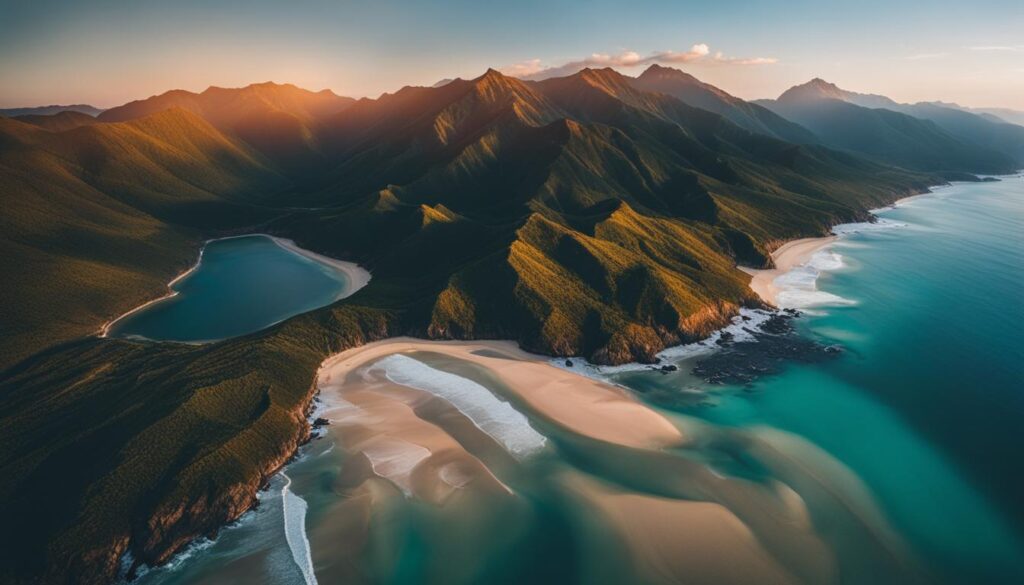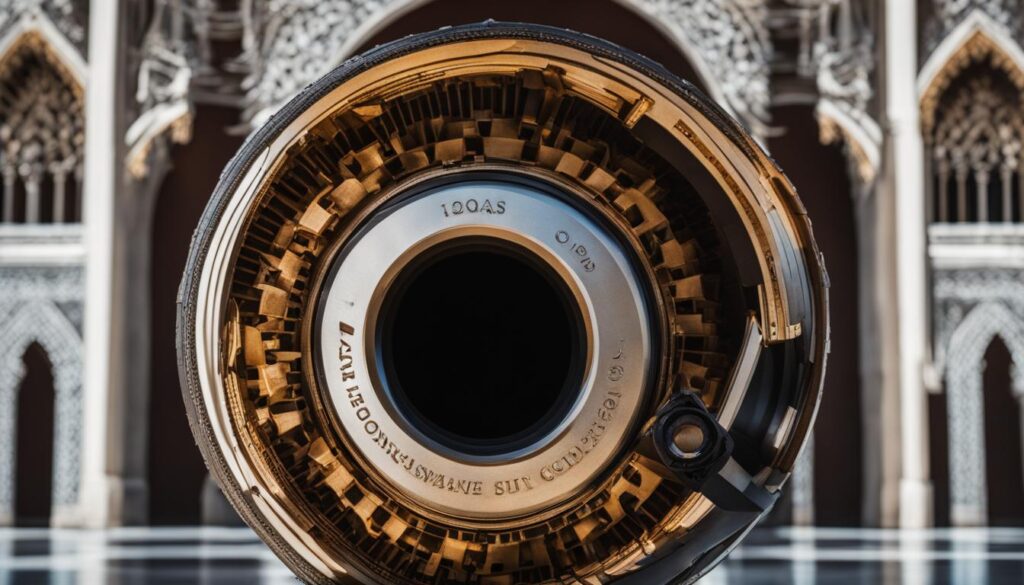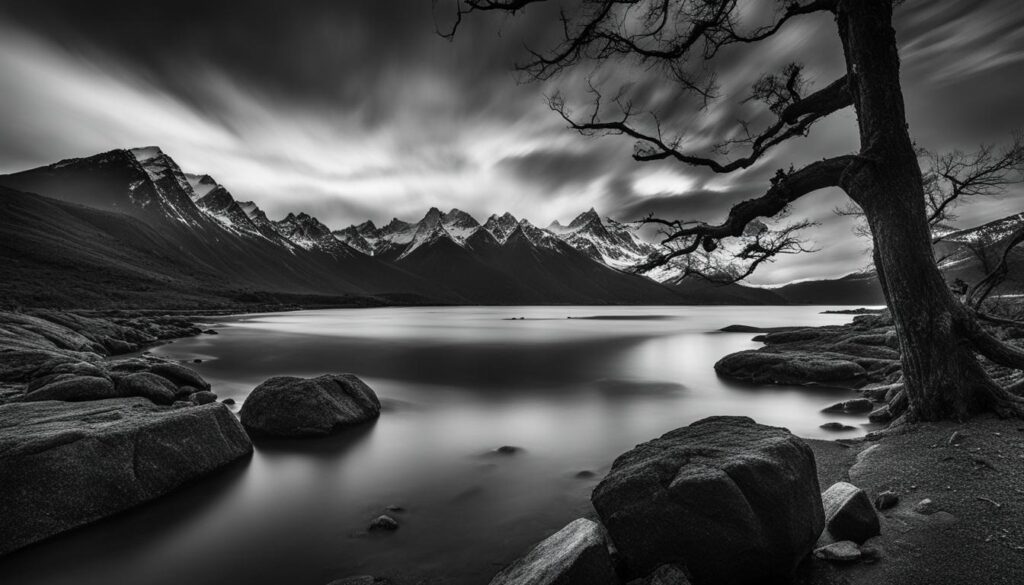We may earn money or products from the companies mentioned in this post.
Street photography is a captivating genre that can help you explore the essence of urban life and capture breathtaking moments that tell stories of the city streets. Whether you are a hobbyist or professional photographer, street photography can help you unlock your passion for capturing unique and candid moments that only happen once in a lifetime.
In this section, we will provide expert advice and insights to help you enhance your urban captures and take your street photography skills to the next level. From understanding the significance of documentary-style photography to exploring the art of black and white street photography, we’ll cover the basics and beyond to help you master your craft.
Join us on this exciting journey as we explore the world of street photography and offer tips and insights to help you step up your game and capture stunning urban moments. Get ready to unlock your passion!
Key Takeaways
- Street photography is a captivating genre that can help you explore the essence of urban life.
- Documentary-style photography is particularly significant in street photography.
- Black and white street photography is an art form that can add depth and emotion to your images.
- Street art and street life photography offer unique opportunities for capturing the energy and culture of city streets.
- Overcoming challenges such as unpredictable subjects or crowded spaces is part of the experience of street photography.
Understanding Street Photography
Street photography is a unique genre that involves capturing candid moments of everyday life in public spaces. Unlike posed or staged photography, street photography captures real-life moments and emotions, offering a glimpse into the essence of a city. Candid street photography is particularly significant, as it captures real-life moments and emotions, offering a glimpse into the essence of a city.
Documentary photography is another approach that street photographers use. This approach aims to document and explore the social and cultural aspects of society. By capturing authentic moments and presenting them in a compelling manner, street photographers can provide valuable insights into the lives of people and the communities they live in.
Both candid street photography and documentary photography are unique approaches that require a keen eye and a willingness to capture the essence of a scene. With practice and patience, any photographer can learn the skills needed to excel in this captivating genre.
Mastering Techniques for Street Photography
Black and white street photography has a timeless quality that can transform mundane scenes into captivating works of art. Many street photographers, such as Henri Cartier-Bresson and Robert Frank, have mastered this technique to create images that evoke powerful emotions and tell compelling stories.
To improve your black and white street photography skills, try experimenting with different settings, such as adjusting the contrast and exposure, or using filters to enhance the mood of your images. Take inspiration from the works of renowned street photographers and try to emulate their style in your own creations.
| Tip | Description |
|---|---|
| Focus on contrast | Black and white images rely on contrasts between light and dark tones to create depth and visual interest. Look for scenes that have strong contrasts, such as bright light shining on a dark alleyway or a person in a white shirt against a dark wall. |
| Find the right light | The quality of light plays a crucial role in black and white photography. Look for scenes that have interesting shadows, reflections, or patterns that can add visual interest to your images. |
| Use composition to your advantage | Composition is key in any type of photography, but especially in black and white street photography. Experiment with different angles, perspectives, and framing to create visually striking images that tell a story. |
Aside from black and white street photography, there are many other techniques that street photographers use to create stunning images. Some photographers focus on capturing the energy and movement of city life, while others prefer to document candid moments and capture the essence of a scene. Whatever your preference, studying the works of different street photographers can help you develop your own unique style and approach to street photography.
Notable Street Photographers
- Henri Cartier-Bresson
- Robert Frank
- Garry Winogrand
- Vivian Maier
- Lee Friedlander
Learning from the techniques of these photographers can provide invaluable insights and inspiration for your own work. By mastering the art of black and white street photography and studying the works of renowned street photographers, you can enhance your skills and take your street photography to the next level.
Capturing Street Art and Street Life
Street photography is not limited to capturing candid moments of people in the street. It is also about documenting the art, architecture, and culture of the urban environment. Street art and street life photography are two exciting sub-genres that provide countless opportunities to capture the vibrant and dynamic energy of the city.
Street Art Photography
Street art is a form of public art that can be found in many cities around the world. It is a visual expression of the culture and identity of a community, and it often reflects social and political issues. Capturing street art is a way to document the ephemeral and ever-changing nature of the urban environment.
When photographing street art, it’s important to consider the location and the context of the artwork. Is the art integrated into the architecture of the city, or is it an act of rebellion against the establishment? By considering these factors, you can create visually compelling images that tell a story about the city and the people who live there.
| Tip | Example |
|---|---|
| Capture the details | Take a close-up shot of the texture and colors of street art. This can create a dramatic effect and showcase the intricacies of the art piece. |
| Experiment with angles | Try taking a shot from a low angle or a bird’s eye view. This can provide a new perspective and highlight the art in its environment. |
| Include people | Photograph people interacting with street art. This can add a human element to the photo and show how the art is part of the city’s culture. |
Street Life Photography
Street life photography is about capturing the energy and diversity of the city streets. It can include anything from people going about their daily lives, to street performers and vendors selling their wares. The key is to capture the essence of the urban environment and the people who inhabit it.
When photographing street life, it’s important to be observant and patient. Let the scene unfold naturally, and be ready to capture the moment when it happens. Look for interesting characters, unique perspectives, and moments of spontaneity.
- Look for contrasting elements, such as old and new architecture, or bright and muted colors.
- Consider shooting in black and white to create a timeless and classic look.
- Get close to your subject to capture the details and emotions of the moment.
By understanding the nuances of street art and street life photography, you can capture the spirit of the city and create images that tell a story about the people and culture that make it unique.
Overcoming Challenges in Street Photography
Street photography can be a thrilling and rewarding genre, but it also comes with its own set of unique challenges.
Dealing with Unpredictable Subjects
One of the biggest challenges in street photography is dealing with unpredictable subjects. People on the street may not always be willing to have their photo taken, and it’s important to respect their boundaries. A good rule of thumb is to ask for permission before taking someone’s photo, or to capture candid moments from a distance.
Navigating Crowded Spaces
Crowded spaces can also present a challenge in street photography. When shooting in busy areas, it’s important to be aware of your surroundings and stay alert. Consider the composition of your shot and look for ways to isolate your subject from the background. You might also try shooting from different angles or elevations to add visual interest to your images.
Facing Legal and Ethical Considerations
Street photography also comes with legal and ethical considerations. Different countries and cities have varying laws regarding photography in public spaces, so it’s important to research the laws in your area before heading out with your camera. Additionally, it’s important to consider the privacy and dignity of your subjects. Be respectful and mindful of the people you are photographing.
Practical Tips and Insights
To overcome these challenges and enhance your street photography experience, here are some practical tips and insights:
- Practice your timing and reflexes to capture candid moments
- Use a fast shutter speed to freeze motion and reduce blur
- Experiment with different lenses and focal lengths to find your preferred style
- Be patient and observant to anticipate interesting moments
With these tips in mind, you can overcome the challenges of street photography and capture stunning urban moments.
Tips for Street Photography Composition
Street photography composition involves a careful balance of capturing the moment and creating a visually appealing image. Here are some tips to help you compose stunning street photographs:
1. Pay attention to lines and shapes
Look for interesting lines and shapes in the scene, such as the lines of a building or the curves of a street. Use these lines and shapes to lead the viewer’s eye through the image and create a sense of depth and movement.
2. Use the rule of thirds
The rule of thirds is a classic composition technique that involves dividing the image into a grid of nine equal parts. Place your subject at one of the intersections of these lines to create a visually interesting and balanced image.
3. Capture unique perspectives
Don’t be afraid to experiment with unusual angles and perspectives. Get down low or shoot from above to create a unique and intriguing viewpoint.
4. Include context and environment
Street photography is not just about capturing people, but also the environment in which they exist. Use the surroundings and context to help tell a story and create a sense of place.
5. Consider black and white
Black and white street photography can add a timeless and classic feel to your images. Experiment with converting your color photos to black and white to see how it changes the mood and feel of the image.
By paying attention to lines, using the rule of thirds, capturing unique perspectives, including context, and experimenting with black and white, you can create stunning street photographs that tell compelling stories and capture the essence of city life.
Conclusion
City street photography is a captivating genre that allows you to explore and capture the essence of urban life. By applying the tips and insights provided in this article, you can unlock your passion for street photography and elevate your skills to the next level.
Remember, understanding the unique characteristics of street photography, mastering the techniques, and overcoming the challenges associated with it, are all key elements in improving your skills.
Keep Practicing
Through practice, you will gain a deeper understanding of the urban landscape and how to capture it in a unique and visually stunning way. The more you practice, the more your style will evolve and develop into your own unique vision and approach.
Share Your Work
Sharing your work with other street photographers, participating in online communities, and attending photography events is an excellent way to connect with like-minded individuals, gain inspiration, and get feedback on your work.
So what are you waiting for? Grab your camera, hit the streets, and start capturing the beauty and excitement that city streets have to offer. Happy shooting!
FAQ
Can anyone do street photography?
Absolutely! Street photography is accessible to everyone, regardless of their skill level or equipment. All you need is a camera and a passion for capturing the essence of urban life.
What is the essence of street photography?
The essence of street photography lies in capturing candid moments and the raw reality of everyday life on city streets. It is about documenting the human experience and telling stories through your images.
How can I improve my street photography skills?
Practice is key to improving your street photography skills. Get out there and explore different locations, experiment with different techniques, and learn from the work of renowned street photographers. Don’t be afraid to take risks and push yourself creatively.
Is it legal to take pictures of strangers on the street?
Generally, it is legal to take pictures of strangers in public places, as long as you are not invading their privacy or using the images for commercial purposes without their consent. However, it’s always best to be respectful and considerate of people’s boundaries.
How can I overcome the fear of photographing strangers?
Overcoming the fear of photographing strangers takes time and practice. Start by building confidence through small steps, such as photographing busy streets or capturing candid moments from a distance. Gradually, you will become more comfortable and confident in approaching subjects.
What equipment do I need for street photography?
While you can do street photography with any camera, a compact and lightweight setup is often preferred for its portability and inconspicuousness. Many street photographers use mirrorless or rangefinder cameras with prime lenses for their versatility and discreetness.
How do I find interesting subjects for street photography?
Interesting subjects can be found everywhere in the city. Wander through busy streets, visit markets, explore parks, or attend events to discover unique characters, fascinating scenes, and captivating moments. Train yourself to see the beauty in the ordinary and the extraordinary in the mundane.
Should I ask for permission before taking someone’s photo?
It depends on the situation and your intentions. If you want to capture candid moments and preserve the authenticity of street photography, it’s generally not necessary to ask for permission. However, if you plan to use the images for commercial purposes or portray someone in a specific way, it’s always best to ask for consent out of respect.
What is the best time of day for street photography?
The best time for street photography is often during the golden hour, which is the hour after sunrise or before sunset. The soft, warm light during this time can add depth and mood to your images. However, street photography can be done at any time of day, as long as you adapt to the lighting conditions and explore different perspectives.
Affiliate Disclosure: This post may contain affiliate links. If you purchase through our link, we may receive a small commission, but at no additional cost to you. For more information, please see our Disclosure statement.



